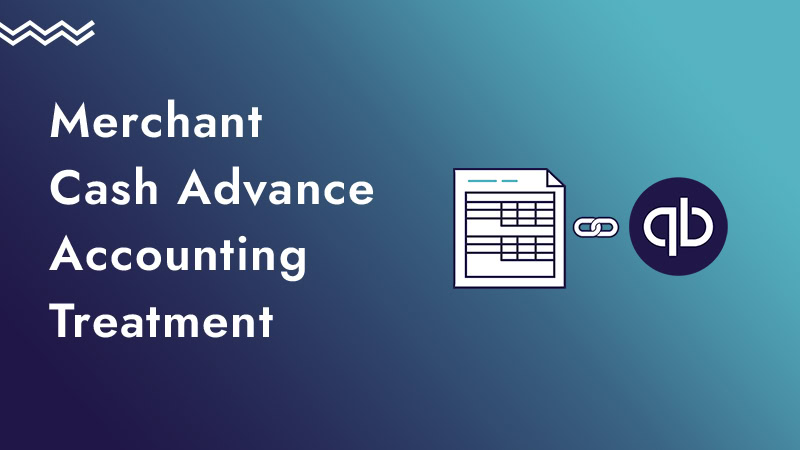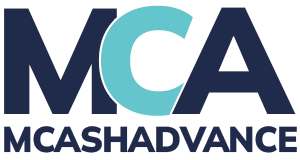
If you’ve used a merchant cash advance (MCA) to inject working capital into your business, it’s important to know how to record it properly. Because MCAs are not loans, they’re handled differently in your books and on your tax return. Misclassifying them could create reporting problems or trigger red flags during tax season.
In this article, we’ll walk you through the five key steps to accurately record an MCA on your financial statements and stay compliant with accounting and tax rules.
How to Record a Merchant Cash Advance on Financial Statements
Here are the five key steps to follow when documenting your MCA:
| Step | Description |
|---|---|
| 01. Confirm the Original MCA Amount You Received | Check your MCA agreement to confirm the net funds deposited into your account after fees. |
| 02. Classify the MCA as a Liability | Record the MCA as a short-term liability using a dedicated account like “MCA Payable.” |
| 03. Record the Initial MCA Transaction | Debit your bank account and credit your MCA Payable account to reflect the disbursement. |
| 04. Recognize Fees and Factor Rate Costs | Identify any origination fees or factor costs and recognize them as expenses over time. |
| 05. Reconcile MCA Repayments by Method | Record repayments (ACH or split-processing) to reduce the liability and reconcile your books. |
Step 1: Confirm the Original MCA Amount You Received
Start by checking your MCA agreement and bank statement to confirm the total disbursed to your business account. This is typically the net amount you received after deducting any origination or processing fees. You’ll use this figure as the principal to track repayment and calculate costs. Make sure you keep the agreement and disbursement records for your accountant or bookkeeper.
Step 2: Classify the MCA as a Liability
Because an MCA is not a loan, you should not list it under loan accounts. Instead, create a separate liability account, such as “MCA Payable.” Most MCAs are repaid in under 12 months, so they should be recorded as short-term liabilities on your balance sheet. This classification helps ensure your financial statements stay compliant with accounting norms and makes your tax filing more accurate.
Step 3: Record the Initial MCA Transaction
Use double-entry bookkeeping to record the transaction:
- Debit your business checking account
- Credit your new MCA Payable liability account
This properly reflects the incoming funds and sets up your books for accurate repayment tracking.
Step 4: Recognize Fees and Factor Rate Costs
MCAs typically charge a flat fee using a factor rate. For example, if you receive £50,000 and owe £65,000, the £15,000 difference is your financing cost. Break that into two categories:
- Origination or administrative fees (often deducted upfront)
- The remaining factor cost, which should be spread across the term of the advance
You should recognize these as business expenses over time. Record them in your general ledger based on your repayment schedule. This allows your profit and loss statement to reflect the true cost of capital, not just the cash flow impact.
Step 5: Reconcile MCA Repayments by Method
Most MCA repayments are either:
- Daily ACH withdrawals
- Split-processing deductions from your card sales
For each payment made, debit your MCA Payable account to reduce the liability and credit your bank account. Reconcile this activity against your MCA agreement and your revenue deposits. This step ensures your balance sheet reflects what you still owe and prevents any misstatements during month-end or year-end reporting.
Final Accounting and Tax Tips
As you approach your monthly close or year-end reporting, make sure your books reflect the correct liability balance and all associated fees. You should be able to show your accountant the original MCA agreement, repayment history, and how you classified and expensed all costs. This will help them accurately report your funding activity and apply the right tax treatment.
It also helps to include a brief note or internal footnote explaining the MCA’s purpose and repayment structure. This becomes important if you’re audited or applying for a bank loan.
Why It’s Worth Getting Professional Help
Even if you’re familiar with your books, MCA accounting can be tricky. Factor rates are not treated like interest. Cash flow hits daily. And tax rules do not treat these advances like traditional loans.
A good accountant or tax preparer will help you:
- Categorize costs accurately
- Avoid IRS scrutiny
- Ensure your financial statements reflect your true cash position and liabilities
This can save you time, prevent costly mistakes, and keep your records audit-ready.
We’ve seen some of the small business owners we’ve funded run into issues by classifying their MCA incorrectly. It’s easy to mistake it for a loan or misplace the fees. That’s why we always recommend having a qualified accountant or tax preparer, ideally someone with experience handling MCAs, review and handle the recording for you. It’s a small step that can save you from bigger problems later.
Ready to Apply?
or learn more about MCA no credit check

